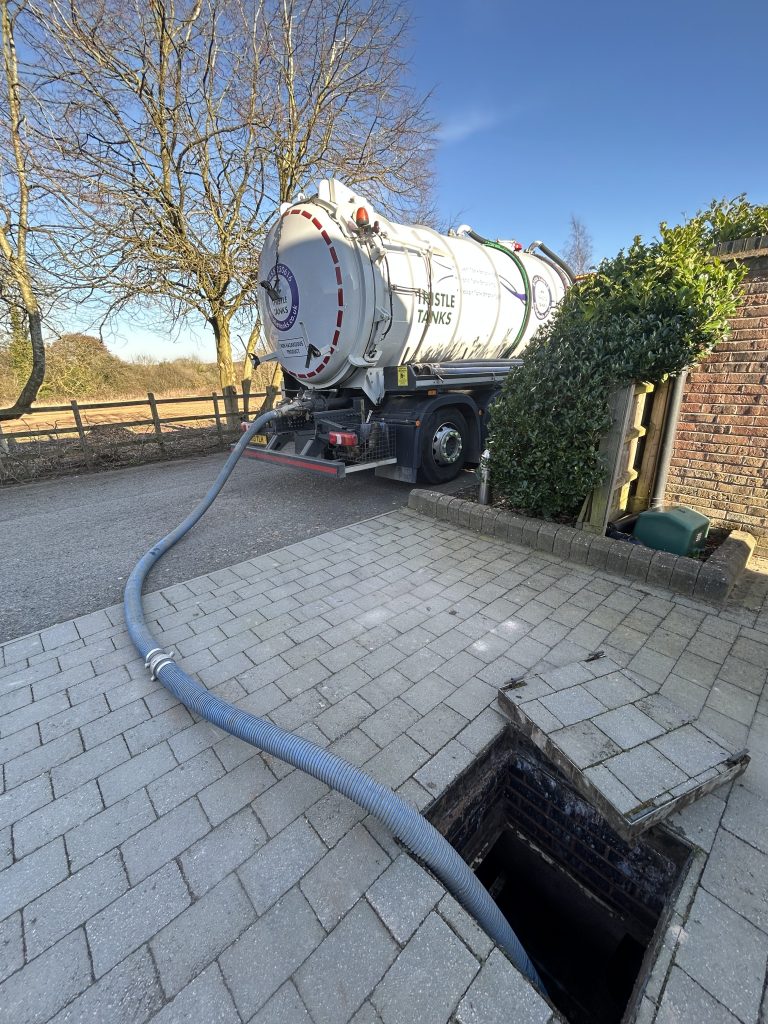A septic tank is a part of an underground wastewater treatment structure (a septic system) that’s used when there is no centralised sewer system, which is usually in rural areas. They treat wastewater (effluent water) used within a building from bathrooms, drains, and laundry, etc, to then dispose of it in the soakaway pipes.
When the wastewater accumulates, the septic tank splits into three layers; the top layer of ‘scum’, which is made up of oil and grease, the middle layer of wastewater, and the third layer that is known as ‘sludge’. As the bottom layer of sludge builds up, you will need to look at getting your tank emptied, although this should not have to be done more than once a year, as recommended by the Environment Agency. However, for larger tanks, this may have to be done every three to six months.

When Should I Empty A Septic Tank?
You’ll know when your septic tank needs emptying from several signs, with the most obvious being a sewage odour from either inside or outside of your home. You may also hear gurgling pipes, have slow drains, and regularly spot wet patches across your garden. The rate at which you need your tank emptying, however, will depend on factors such as the size of your tank and the number of people in your household.
If your house is small, then you may be in for some good news! Generally speaking, larger households with more people have more bathrooms, meaning that they’ll likely use up more water from more showers, laundry, and so on. Although your septic tank might be smaller and may even get away with only being emptied every two years as opposed to one, there are regulations you must be aware of.
Important Septic Regulations
These regulations are in place to ensure that local drainage systems continue to work efficiently and to help reduce pollution. As of 2015, septic tanks wastewater must flow into a drainage field or soakaway system, whereby the water filters through holes in the pipework, as opposed to a watercourse which is where wastewater flows through a sealed pipe and goes straight to a local watercourse such as a stream or river.
In regard to where to build your septic tank when you’ve got a small house, it will need to be underground and be easily accessible from the outside of your building, which is to prevent interior air contamination. The tank in itself will not take up too much space, however, it should be at least seven metres from any other parts of yours/your neighbour’s building that is lived in. You should also place your septic tank further than five metres from any tree and within thirty metres of an access point for the desludging process.
When it comes to emptying your septic tank, you’ll want to call for professional help and use a reliable waste carrier like ourselves. Request a quick quote from us today and contact us to find out more information from our friendly team.

